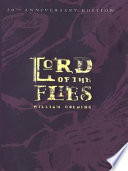

Golding delves into the complexities of good and evil through the characters in 'Lord of the Flies.' The struggle between Ralph and Jack embodies the conflict between civilized behavior and primal instincts. The novel suggests that good and evil are not fixed traits but rather exist within everyone, influenced by circumstances and choices. This exploration raises questions about morality, ethics, and the potential for darkness within each individual, ultimately leading readers to consider the nature of humanity itself.
Continue readingThe isolation of the boys on the island serves as a microcosm for examining human behavior in the absence of societal constraints. As they are cut off from the influences of civilization, their true natures emerge. The novel explores how isolation can lead to both a sense of freedom and a descent into chaos. The boys' experiences highlight the importance of social structures in maintaining order and the dangers that arise when individuals are left to their own devices.
Continue readingOne of the central themes of 'Lord of the Flies' is the exploration of the inherent savagery within humans. The novel suggests that when stripped of societal norms and structures, individuals revert to primal instincts. This idea is embodied in the character of Jack, who represents the darker aspects of human nature. As the boys find themselves isolated on an uninhabited island, their initial attempts at civilization quickly dissolve into chaos. This regression highlights the notion that civilization is a fragile construct, easily dismantled when faced with the absence of authority and societal rules.
Continue readingThe boys in 'Lord of the Flies' begin as innocent children but gradually lose their innocence as they descend into savagery. This loss is marked by their increasingly violent actions and the moral decay they experience. Ralph, the protagonist, struggles to maintain order and civility, but ultimately witnesses the transformation of his peers into ruthless hunters. The novel poignantly illustrates how power and fear can corrupt even the most innocent individuals, leading to a profound and tragic loss of childhood innocence.
Continue readingLeadership plays a crucial role in 'Lord of the Flies,' as the boys grapple with the dynamics of power and authority. Ralph, who is initially elected as the leader, represents democratic values and order. However, as Jack rises to power through manipulation and fear, the boys' allegiance shifts. This transition underscores the complexities of leadership and the fine line between authority and tyranny. The novel invites readers to reflect on the qualities that make a good leader and the consequences of failing to uphold those ideals.
Continue readingFear is a driving force in 'Lord of the Flies,' influencing the boys' actions and decisions. The fear of the unknown, symbolized by the 'beast,' becomes a pervasive element that exacerbates tensions among the group. As fear takes hold, rationality gives way to hysteria, leading to violent confrontations and the eventual breakdown of order. Golding illustrates how fear can manipulate individuals, leading them to commit acts they would otherwise consider unthinkable. The narrative serves as a cautionary tale about the destructive power of fear in society.
Continue readingThe conch shell in 'Lord of the Flies' serves as a powerful symbol of civilization, order, and democratic discourse. Initially, it is used to call meetings and establish a sense of authority among the boys. However, as chaos ensues and Jack's influence grows, the conch loses its power and significance. This decline represents the disintegration of social order and the triumph of savagery over civilization. Golding uses the conch to illustrate the fragility of societal structures and the ease with which they can be dismantled.
Continue reading